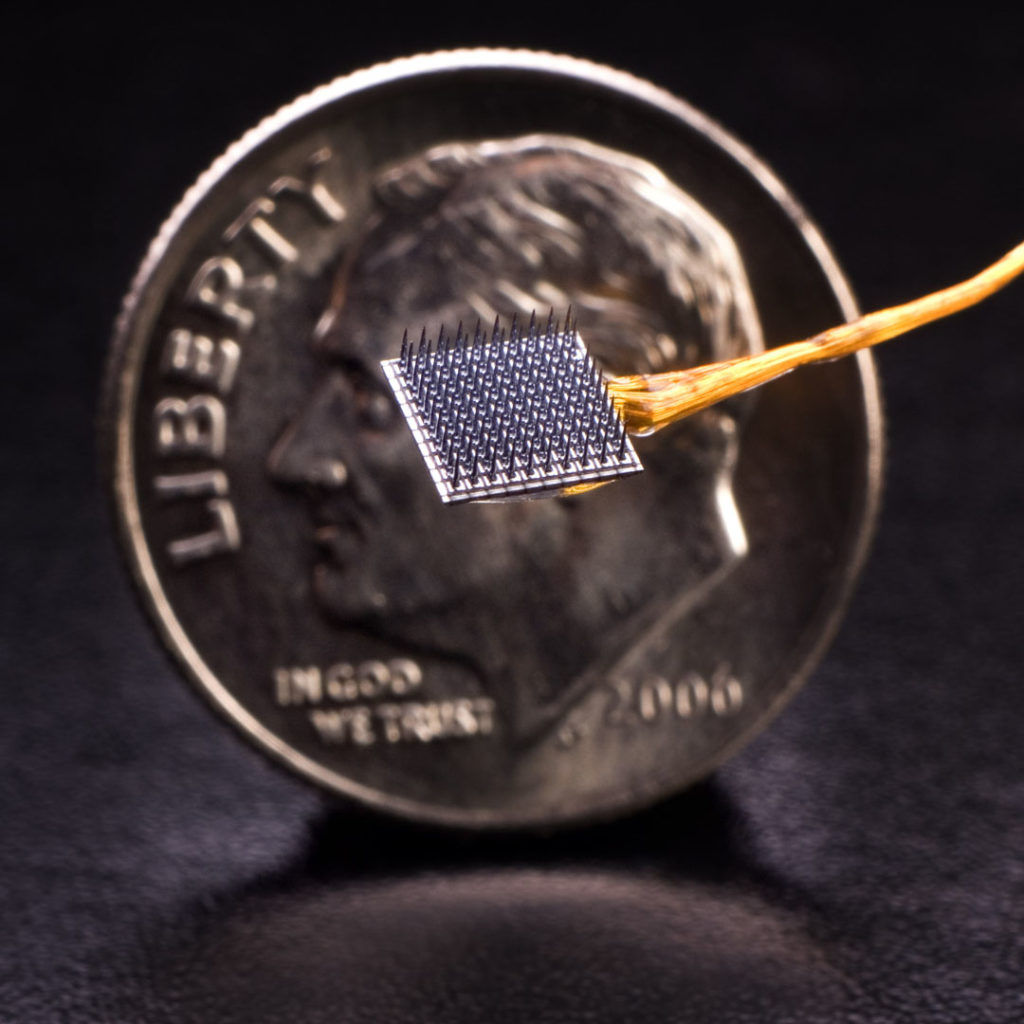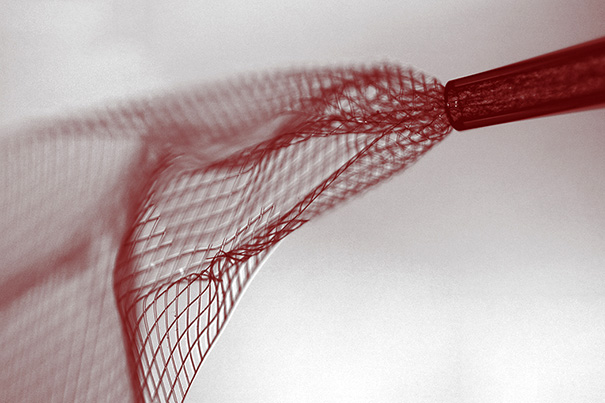

News
SpaceX and Tesla CEO Elon Musk teases major Neuralink update “in a few months”
In a several-hour live interview on September 6-7, Tesla and SpaceX CEO Elon Musk managed to slip in a few words about Neuralink, a side-project company formed by Musk for the purpose of bridging the gap between potential superhuman AI and the human brain itself.
Although the eccentric CEO/CTO wouldn’t say much more, he did tease a potentially revolutionary update from the fully-stealthed startup “in a few months”.
The purpose of neuralink is to "merge" with AI tech. Musk says they have an announcement on that front coming in a few months.
— Robin Seemangal (@nova_road) September 7, 2018
Currently composed of at least several dozen employees, Neuralink has been working in absolute silence since its July 2016 formation, effectively acting as a privately-funded research laboratory for the vast majority of those ~25 months. More recently, however, the theme of job listings has gradually shifted from experimental science, engineering, and fabrication to something more explicitly focused on one or a few particularly promising solutions to the problems at hand.
Those challenges are quite significant: to even begin to build “ultra-high bandwidth brain-machine interfaces to connect humans and computers”, Neuralink will need to push miles ahead of all competitors, both academic and otherwise. Somehow, the company will need to find ways to build brain-computer interfaces (BCIs) that are extraordinarily noninvasive (i.e. no surgery, no anesthetic, no open holes in the skull), feature bandwidth hundreds or thousands of times greater than the current state-of-the-art offerings, and can be uniformly distributed throughout the brain while still being able to cluster at critical centers of activity (memory, speech, vision, etc).
Still, Musk apparently believes that some significant progress is being made, and demonstrated no hesitation at all before stating that,
“I think [Neuralink will] have something interesting to announce in a few months that’s at least an order of magnitude better than anything else, probably better than anyone thinks is possible.”
This is an extraordinarily good sign for the highly speculative neural interface company, as almost any progress at all will demand leaps forward that – as Musk notes – very few people would believe possible. The “order of magnitude” improvement he mentions is also thoroughly interesting, requiring one to ask what particular aspect(s) of a BCI might mesh well with that sort of language.
- While we have no clue what Neuralink’s stealthed work has produced, it’s perhaps the most long-term venture Musk has started. The path to market for medical devices is very long and even more expensive.
- A traditional, state-of-the-art 100 electrode array. This is implanted directly into the brain by way of open-brain surgery. (Matthew McKee, Brown University)
- An alternative non-invasive electrode, in the form of an injectable mesh. (Lieber Research Group)
There are a couple of possibilities for that order of magnitude step forward. While some of these comparisons may actually be anachronistic depending on just how cutting-edge of an approach Neuralink is pursuing, the most obvious source of a tenfold or greater improvement would be the density of electrodes fit onto a given array, currently capped at around a few hundred per each several square millimeter array. However, that form of neural interface electrode is quite simply very invasive, requiring a literal hole in the subject’s skull to directly embed the electrodes into the brain itself. As such, it may actually be more likely that Musk is referring to an “order of magnitude” improvement more generally referencing a multitude of various advancements, ranging from bandwidth to ease of installation to the number of neurons able to be both surveilled and stimulated, or perhaps even the granularity of the surveillance/stimulation available.
As Musk notes, “If we can solve the bandwidth problem, humans can probably indefinitely continue to live in symbiosis with machines.” Fingers crossed that Neuralink is having some success in that direction. Read more here about the challenges ahead of Neuralink, the brilliant individuals involved, and the many potential routes the company might take in pursuit of symbiotically merging human brains and AI.
For prompt updates, on-the-ground perspectives, and unique glimpses of SpaceX’s rocket recovery fleet check out our brand new LaunchPad and LandingZone newsletters!

Elon Musk
Starlink passes 9 million active customers just weeks after hitting 8 million
The milestone highlights the accelerating growth of Starlink, which has now been adding over 20,000 new users per day.

SpaceX’s Starlink satellite internet service has continued its rapid global expansion, surpassing 9 million active customers just weeks after crossing the 8 million mark.
The milestone highlights the accelerating growth of Starlink, which has now been adding over 20,000 new users per day.
9 million customers
In a post on X, SpaceX stated that Starlink now serves over 9 million active users across 155 countries, territories, and markets. The company reached 8 million customers in early November, meaning it added roughly 1 million subscribers in under seven weeks, or about 21,275 new users on average per day.
“Starlink is connecting more than 9M active customers with high-speed internet across 155 countries, territories, and many other markets,” Starlink wrote in a post on its official X account. SpaceX President Gwynne Shotwell also celebrated the milestone on X. “A huge thank you to all of our customers and congrats to the Starlink team for such an incredible product,” she wrote.
That growth rate reflects both rising demand for broadband in underserved regions and Starlink’s expanding satellite constellation, which now includes more than 9,000 low-Earth-orbit satellites designed to deliver high-speed, low-latency internet worldwide.
Starlink’s momentum
Starlink’s momentum has been building up. SpaceX reported 4.6 million Starlink customers in December 2024, followed by 7 million by August 2025, and 8 million customers in November. Independent data also suggests Starlink usage is rising sharply, with Cloudflare reporting that global web traffic from Starlink users more than doubled in 2025, as noted in an Insider report.
Starlink’s momentum is increasingly tied to SpaceX’s broader financial outlook. Elon Musk has said the satellite network is “by far” the company’s largest revenue driver, and reports suggest SpaceX may be positioning itself for an initial public offering as soon as next year, with valuations estimated as high as $1.5 trillion. Musk has also suggested in the past that Starlink could have its own IPO in the future.
News
NVIDIA Director of Robotics: Tesla FSD v14 is the first AI to pass the “Physical Turing Test”
After testing FSD v14, Fan stated that his experience with FSD felt magical at first, but it soon started to feel like a routine.

NVIDIA Director of Robotics Jim Fan has praised Tesla’s Full Self-Driving (Supervised) v14 as the first AI to pass what he described as a “Physical Turing Test.”
After testing FSD v14, Fan stated that his experience with FSD felt magical at first, but it soon started to feel like a routine. And just like smartphones today, removing it now would “actively hurt.”
Jim Fan’s hands-on FSD v14 impressions
Fan, a leading researcher in embodied AI who is currently solving Physical AI at NVIDIA and spearheading the company’s Project GR00T initiative, noted that he actually was late to the Tesla game. He was, however, one of the first to try out FSD v14.
“I was very late to own a Tesla but among the earliest to try out FSD v14. It’s perhaps the first time I experience an AI that passes the Physical Turing Test: after a long day at work, you press a button, lay back, and couldn’t tell if a neural net or a human drove you home,” Fan wrote in a post on X.
Fan added: “Despite knowing exactly how robot learning works, I still find it magical watching the steering wheel turn by itself. First it feels surreal, next it becomes routine. Then, like the smartphone, taking it away actively hurts. This is how humanity gets rewired and glued to god-like technologies.”
The Physical Turing Test
The original Turing Test was conceived by Alan Turing in 1950, and it was aimed at determining if a machine could exhibit behavior that is equivalent to or indistinguishable from a human. By focusing on text-based conversations, the original Turing Test set a high bar for natural language processing and machine learning.
This test has been passed by today’s large language models. However, the capability to converse in a humanlike manner is a completely different challenge from performing real-world problem-solving or physical interactions. Thus, Fan introduced the Physical Turing Test, which challenges AI systems to demonstrate intelligence through physical actions.
Based on Fan’s comments, Tesla has demonstrated these intelligent physical actions with FSD v14. Elon Musk agreed with the NVIDIA executive, stating in a post on X that with FSD v14, “you can sense the sentience maturing.” Musk also praised Tesla AI, calling it the best “real-world AI” today.
News
Tesla AI team burns the Christmas midnight oil by releasing FSD v14.2.2.1
The update was released just a day after FSD v14.2.2 started rolling out to customers.

Tesla is burning the midnight oil this Christmas, with the Tesla AI team quietly rolling out Full Self-Driving (Supervised) v14.2.2.1 just a day after FSD v14.2.2 started rolling out to customers.
Tesla owner shares insights on FSD v14.2.2.1
Longtime Tesla owner and FSD tester @BLKMDL3 shared some insights following several drives with FSD v14.2.2.1 in rainy Los Angeles conditions with standing water and faded lane lines. He reported zero steering hesitation or stutter, confident lane changes, and maneuvers executed with precision that evoked the performance of Tesla’s driverless Robotaxis in Austin.
Parking performance impressed, with most spots nailed perfectly, including tight, sharp turns, in single attempts without shaky steering. One minor offset happened only due to another vehicle that was parked over the line, which FSD accommodated by a few extra inches. In rain that typically erases road markings, FSD visualized lanes and turn lines better than humans, positioning itself flawlessly when entering new streets as well.
“Took it up a dark, wet, and twisty canyon road up and down the hill tonight and it went very well as to be expected. Stayed centered in the lane, kept speed well and gives a confidence inspiring steering feel where it handles these curvy roads better than the majority of human drivers,” the Tesla owner wrote in a post on X.
Tesla’s FSD v14.2.2 update
Just a day before FSD v14.2.2.1’s release, Tesla rolled out FSD v14.2.2, which was focused on smoother real-world performance, better obstacle awareness, and precise end-of-trip routing. According to the update’s release notes, FSD v14.2.2 upgrades the vision encoder neural network with higher resolution features, enhancing detection of emergency vehicles, road obstacles, and human gestures.
New Arrival Options also allowed users to select preferred drop-off styles, such as Parking Lot, Street, Driveway, Parking Garage, or Curbside, with the navigation pin automatically adjusting to the ideal spot. Other refinements include pulling over for emergency vehicles, real-time vision-based detours for blocked roads, improved gate and debris handling, and Speed Profiles for customized driving styles.











